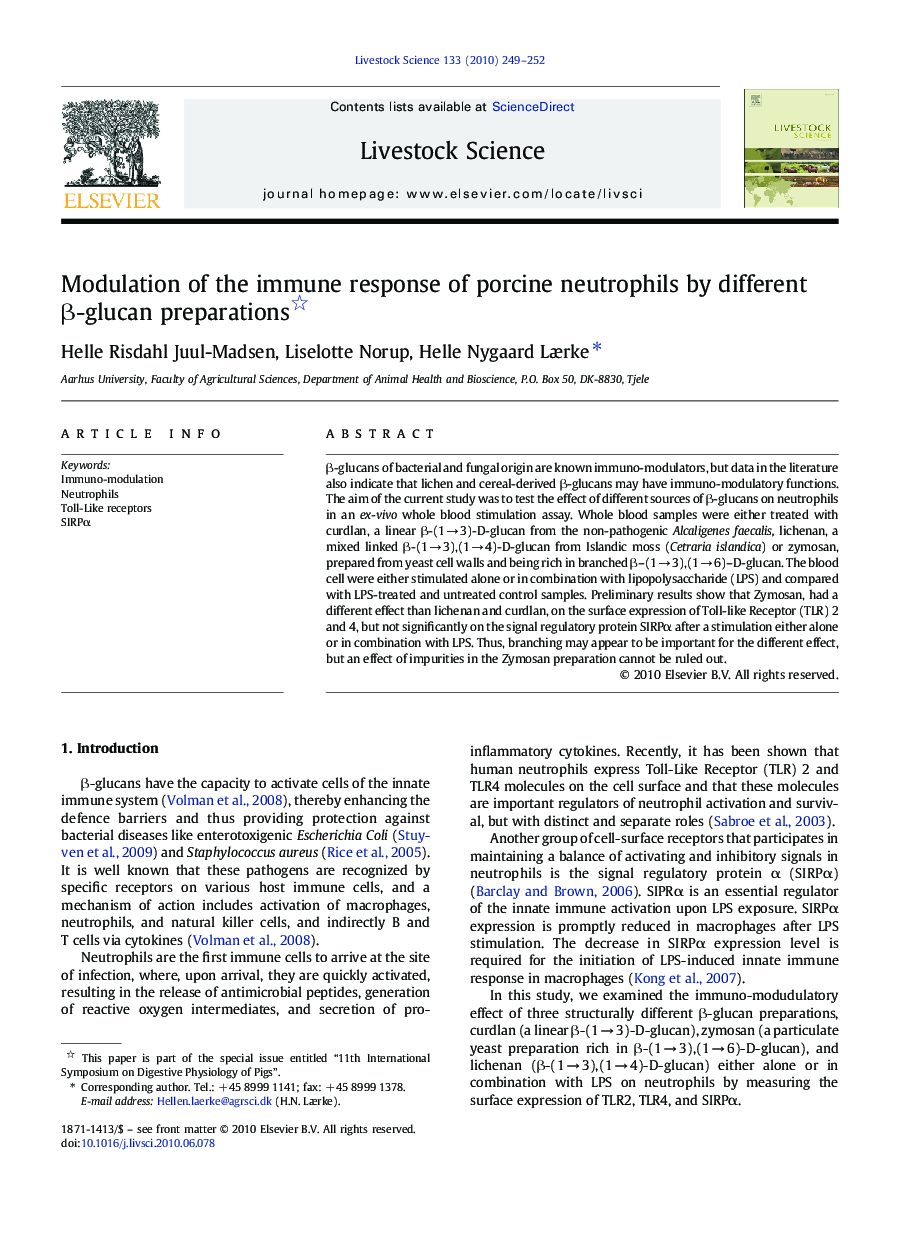| Article ID | Journal | Published Year | Pages | File Type |
|---|---|---|---|---|
| 2447740 | Livestock Science | 2010 | 4 Pages |
β-glucans of bacterial and fungal origin are known immuno-modulators, but data in the literature also indicate that lichen and cereal-derived β-glucans may have immuno-modulatory functions. The aim of the current study was to test the effect of different sources of β-glucans on neutrophils in an ex-vivo whole blood stimulation assay. Whole blood samples were either treated with curdlan, a linear β-(1 → 3)-D-glucan from the non-pathogenic Alcaligenes faecalis, lichenan, a mixed linked β-(1 → 3),(1 → 4)-D-glucan from Islandic moss (Cetraria islandica) or zymosan, prepared from yeast cell walls and being rich in branched β–(1 → 3),(1 → 6)–D-glucan. The blood cell were either stimulated alone or in combination with lipopolysaccharide (LPS) and compared with LPS-treated and untreated control samples. Preliminary results show that Zymosan, had a different effect than lichenan and curdlan, on the surface expression of Toll-like Receptor (TLR) 2 and 4, but not significantly on the signal regulatory protein SIRPα after a stimulation either alone or in combination with LPS. Thus, branching may appear to be important for the different effect, but an effect of impurities in the Zymosan preparation cannot be ruled out.
